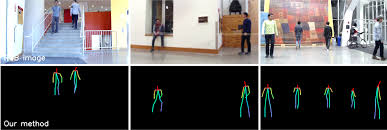
Breaking News
 Why Food Stamp Recipients (and Government Contractors) Should not Be Allowed to Vote
Why Food Stamp Recipients (and Government Contractors) Should not Be Allowed to Vote
 Ben Shapiro Reveals Texts with Tucker Carlson and Tells FULL Backstory of How it Got To This Point
Ben Shapiro Reveals Texts with Tucker Carlson and Tells FULL Backstory of How it Got To This Point
 These Are The 20 Most Chilling Insights From Yuri Bezmenov
These Are The 20 Most Chilling Insights From Yuri Bezmenov
 The Fraudulent WAR Against Tucker ESCALATES
The Fraudulent WAR Against Tucker ESCALATES
Top Tech News
 HUGE 32kWh LiFePO4 DIY Battery w/ 628Ah Cells! 90 Minute Build
HUGE 32kWh LiFePO4 DIY Battery w/ 628Ah Cells! 90 Minute Build
 What Has Bitcoin Become 17 Years After Satoshi Nakamoto Published The Whitepaper?
What Has Bitcoin Become 17 Years After Satoshi Nakamoto Published The Whitepaper?
 Japan just injected artificial blood into a human. No blood type needed. No refrigeration.
Japan just injected artificial blood into a human. No blood type needed. No refrigeration.
 The 6 Best LLM Tools To Run Models Locally
The 6 Best LLM Tools To Run Models Locally
 Testing My First Sodium-Ion Solar Battery
Testing My First Sodium-Ion Solar Battery
 A man once paralyzed from the waist down now stands on his own, not with machines or wires,...
A man once paralyzed from the waist down now stands on his own, not with machines or wires,...
 Review: Thumb-sized thermal camera turns your phone into a smart tool
Review: Thumb-sized thermal camera turns your phone into a smart tool
 Army To Bring Nuclear Microreactors To Its Bases By 2028
Army To Bring Nuclear Microreactors To Its Bases By 2028
 Nissan Says It's On Track For Solid-State Batteries That Double EV Range By 2028
Nissan Says It's On Track For Solid-State Batteries That Double EV Range By 2028
Smart technology sees through walls to track and identify people

A group of researchers and students at MIT have developed an intelligent radar-like technology that makes it possible to see through walls to track people as they move around, a development that could prove useful for monitoring the elderly or sick as well as for other applications — but that also raises privacy concerns.
Tests show that the technology, known as RF-Pose, can reveal whether someone is walking, sitting, standing or even waving — and can identify individuals from a known group with a success rate of 83 percent. Its developers say it could prove useful for law enforcement, search and rescue, and — perhaps most important — health care.
"We've seen that monitoring patients' walking speed and ability to do basic activities on their own gives health care providers a window into their lives that they didn't have before, which could be meaningful for a whole range of diseases," Dina Katabi, a computer scientist at MIT and leader of the group, said in a statement.
She and her colleagues presented new research about the technology last month at a computer vision conference in Salt Lake City.

 Carbon based computers that run on iron
Carbon based computers that run on iron

